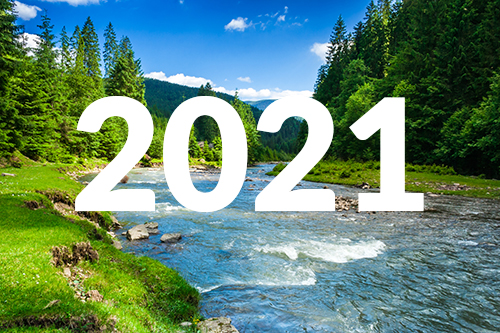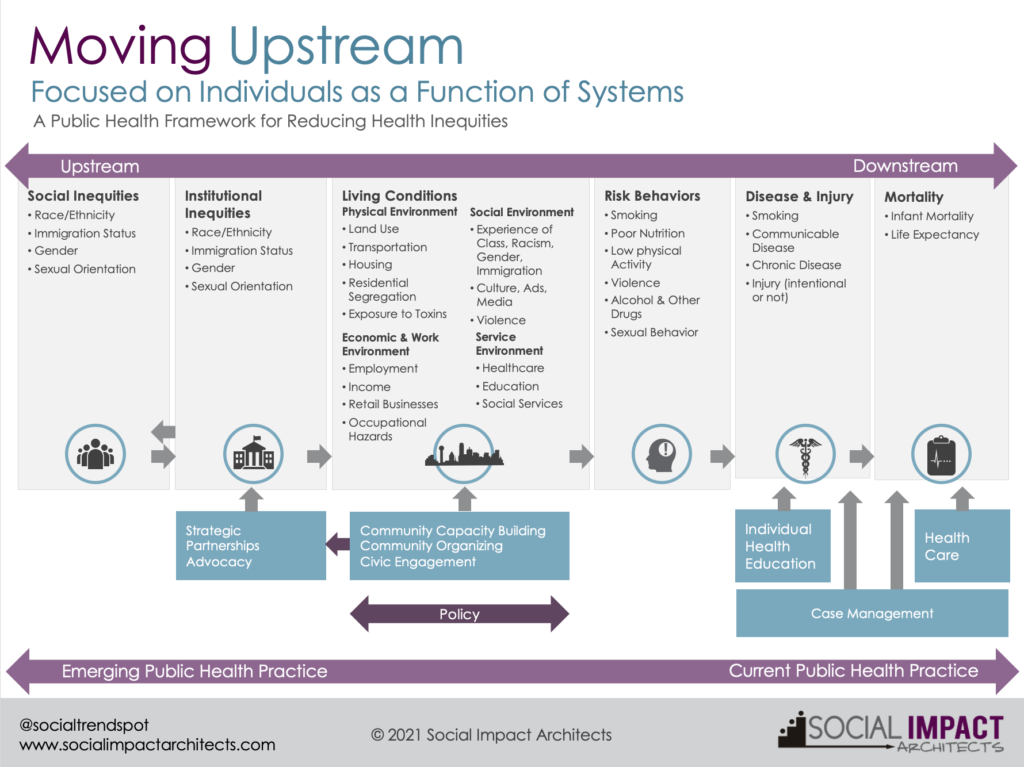 When I first heard the famous parable about “The River,” I was at a national cardiovascular convening in 2003 held at Mountain Lake Lodge in Virginia (made famous by Dirty Dancing). The presenter told the story: you and a friend are having a picnic by the side of a river. All of a sudden, your friend looks in the river and points to a baby drowning in the river. Of course, you and everyone else around jump into the river to save the baby, but unfortunately, more keep coming. At first, it is manageable, but then they start coming faster. Out of breath, everyone tries hard to keep up, but some are saved and others are not. Finally, you look around and see your friend leaving the river and walking away. You ask, “Where are you going?” Your friend answers with disgust, “I’m going upstream to find out who is throwing babies into the river and try to stop it.”
When I first heard the famous parable about “The River,” I was at a national cardiovascular convening in 2003 held at Mountain Lake Lodge in Virginia (made famous by Dirty Dancing). The presenter told the story: you and a friend are having a picnic by the side of a river. All of a sudden, your friend looks in the river and points to a baby drowning in the river. Of course, you and everyone else around jump into the river to save the baby, but unfortunately, more keep coming. At first, it is manageable, but then they start coming faster. Out of breath, everyone tries hard to keep up, but some are saved and others are not. Finally, you look around and see your friend leaving the river and walking away. You ask, “Where are you going?” Your friend answers with disgust, “I’m going upstream to find out who is throwing babies into the river and try to stop it.”
Synergy vs. Silos: There is growing recognition that true social change – whether it is improving health, combating climate change or creating wealth – will not happen within a single system. We know that when we have solved big societal problems (e.g., traffic fatalities, smoking), it has happened when multiple sectors came together toward a common vision and used all the tools at their disposal (e.g., social marketing, policy changes, education). In order to model this approach, we work with clients on leveraging design thinking to create “user personas” to walk in the shoes of those they serve. Through this process, you can simulate all the influences that impact clients’ decisions and prioritize those for collaboration.
Solution Orientation vs. Problem Orientation: As I often tell my students, one of the hallmarks of upstream work is to “fall in love with the problem.” It is about flipping our mindset from jumping to a solution before we truly understand the nature of the problem. For organizations, this means always collecting and sifting through data to better understand the problem, talking to those you serve about their pain points and ideas, and mapping the entire ecosystem to understand where and how the system may be getting stuck.
Accountability vs. Responsibility: At first glance, these words may mean the same thing to you. Both are task-oriented, but they differ in their outcome. Responsibility is about completion. Accountability is about results. Many of us walk through our to-do list the same way – checking the box. But too often we stop there without ever discovering the results of that work. Did it create the intended outcome? Have conditions changed and, if so, what do we need to do to ensure that we continue achieving results? As my good friend and colleague, Ashwina Kirpalani, of The Commit Partnership, aptly said to my students, “Are you a person who checks the box or makes the box?” In order to shift this mindset, organizations have to move to an “ownership” mentality. For more tips on how to make this shift, see our recent post on employee ownership.
Impact Measurement vs. Evaluation: Nothing strikes fear into the heart of a nonprofit employee more than the word “evaluation.” It has led us down a path where the social sector worries about measuring everything – for fear of being wrong or being perceived as critical. And, it has led to a less-than-desirable result – we only share the “good data” about our programs and not our struggles or pain points, so we never evolve as a sector. We keep reinventing the wheel unsuccessfully. In past posts, we have shared remedies to this mentality – adopting a lean startup approach, embracing failure as a norm and adopting an impact culture. We encourage you to plot your organization on our Impact Culture Checklist to see how you are doing and uncover opportunities for growth in 2021.
Creator/Challenger/Coach vs. Victim/Persecutor/Rescuer: I love superhero movies, but they have influenced our ethos enough that many people believe that you can solve complex social issues with a “silver bullet.” It has also created what we call a “superhero complex.” One of the best reads on this dynamic is TED (The Empowerment Dynamic), a quick read on the dreaded drama triangle (DDT) and how to shift it. We have used this book often with executive teams and clients because it sets the right tone for upstream thinking – both in the office and with those we serve to ensure the right power dynamic.

